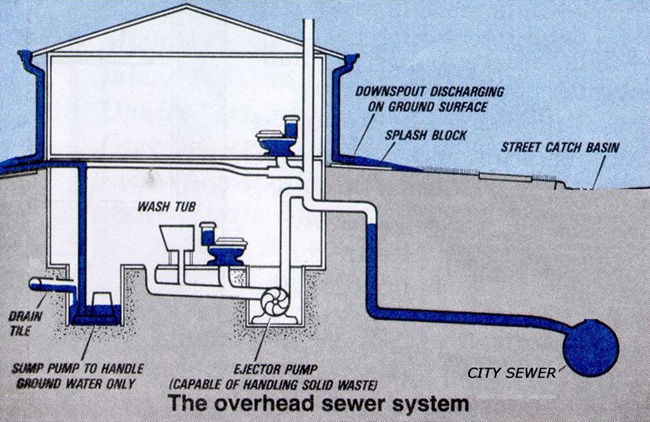Sanitary & Sewer Ejector Pumps

We understand that minutes count when you're experiencing a plumbing emergency so we guarantee prompt, courteous service
When you call N.J. Affordable HVAC Plumbing & Drain Cleaning we'll dispatch our certified plumbers as soon as possible and we’ll always wear shoe covers our clean, well maintained fleet of service vehicles are stocked with most a wide variety of high quality plumbing parts to ensure our plumbers will have the parts they need to get the job done at first time right.
Sewage pumps, sanitary sewer pumps or solid waste pumps are used when there are toilets below the public or private sewer line. If waste can't flow to the sewer line by gravity, the waste has to be lifted to be discharged into the sewer. These pumps are able to pump solids and liquids from the sump or tank up to the sewer. These systems consist of a buried tank or sump made of corrosion resistant material (new ones are often fiberglass or polyethylene) with a sealed, watertight lid. The top of the tank is often flush with the floor of the lowest living space level. A diameter of 18 inches and a 30-inch depth are typical. a side inlet to receive discharge from toilets and other fixtures. This is typically 3 to 4 inches in diameter. an electric pump and motor inside, operated by a float or diaphragm type level sensor to activate the pump. When the liquid level in the tank rises, the pump is activated. Pump motors are typically 1/2 horsepower.
In some cases, a pedestal pump with the motor located above the tank or sump. This makes it easier to see. Most modern sewage pumps have a submersible pump with the pump and motor completely inside the tank. These systems can be hard wired or plugged in. Some systems have separate electric for the automatic controls. These are 120-volt systems. A discharge pipe, typically 2 inches in diameter, comes off the top of the tank. Some jurisdictions require that the first connection be a union. This makes disassembly and servicing easier.
Many installations require a check valve and then a gate valve as we move away from the tank in the discharge line. The check valve is used when the sewage ejector pump is connected to a public sewer system and protects the tank and fixtures that feed the tank from backup of the municipal sewer system. This is necessary since the pump and these fixtures are below the sewer line. The check valve may have to be in a horizontal section of pipe to work properly. The gate valve is to isolate the tank and check valve from the discharge line for servicing. A vent pipe comes off the top of the tank and vents like any other plumbing fixture. It is typically 1.5 to 3 inches in diameter, with 2-inch diameter piping being the most common. A high level alarm is an option on some units. This lets the homeowner know when something is wrong with the system.
Seasonal properties such as cottages with private sewage disposal systems often have no check valve on the discharge line because any liquids in the line beyond the check valve would freeze during cold weather. With no check valve, the discharge line can run from the pump to a septic tank, for example, without our worrying about burying the line below the frost level. There is less risk of catastrophic sewer backup with a private disposal system than with a municipal sewer connection, so the check valve isn't as critical here.




